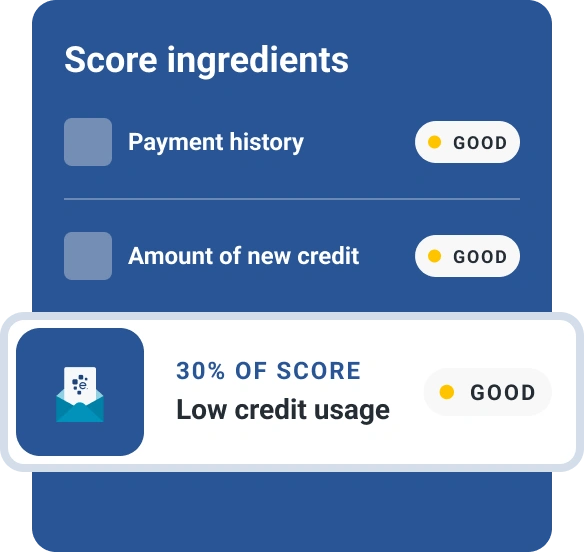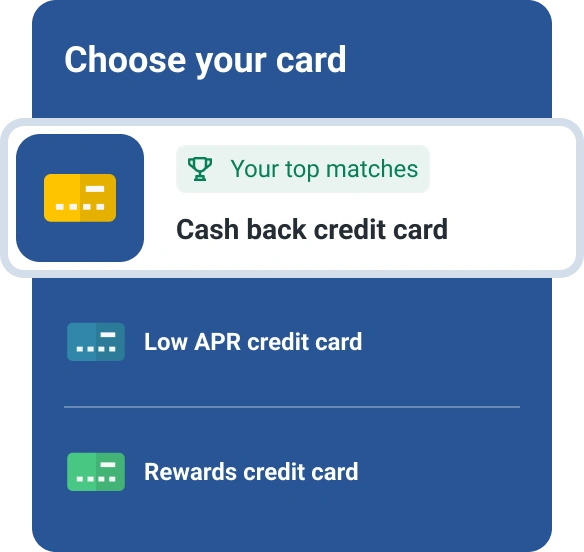What Is a Schumer Box?
Quick Answer
A Schumer box is a summary of a credit card’s rates and fees. It also lets you know what a given credit card is likely to cost you if you take out cash advances, use the card in other countries or pay late. It is an easy-to-read summary table required by federal law.

A Schumer box is a legally required summary of a credit card's rates and fees—including the card's annual percentage rates (APRs), annual fee, cash advance fee and late payment fee. You can use the information found in a Schumer box to compare credit card offers or understand potential costs for a card that's already in your wallet.
What Is a Schumer Box?
A Schumer box is a standardized disclosure table that summarizes a credit card's interest rates and fees. You can use this easy-to-read snapshot to better understand key information about the cost to use a card. Schumer boxes are generally used to compare credit offers or learn more about a card you carry.
For example, the information found in a Schumer box breaks down what a credit card charges for carrying a balance, using the card overseas, taking out cash advances and paying late.
The Schumer Box is named after Sen. Chuck Schumer, a former congressman and later senator from New York who advocated for legislation that required credit card terms to be displayed prominently when people apply for a card. The original legislation passed in 1988 and went into effect in 2000 as an amendment to the Truth in Lending Act.
Where Can I Find a Schumer Box?
You can find a Schumer box in numerous places. It's typically hard to miss thanks to a required larger font size and clear table format.
For existing cardholders, the Schumer box is commonly found on the first page of the credit card agreement you received in the mail when you first got the card. It may also appear on the first page of your credit card statement.
Credit card offers sent by mail generally have the Schumer box clearly displayed. But if you're comparing cards online, you may have to click around a bit first. Looks for terms like "cardmember agreement," "terms and conditions" or "pricing" to find the Schumer box.
How to Read a Schumer Box
A Schumer box is legally designed to be easy to read. Here's what to know about how to read the information that shows up in a Schumer box.
Purchase APR
The purchase APR is the interest rate you'll be charged on purchases you make if you don't pay your statement balance in full before the grace period ends. When comparing cards, you may see a range of APRs. For 0% introductory APR cards, this part of the Schumer box also explains more details about the offer, like when it expires.
Other APRs
The Schumer box shows rates for any additional APRs the credit card issuer may charge, such as cash advance APRs and balance transfer APRs. Rates on cash advances tend to be higher than your purchase APR, while balance transfer rates are often lower.
Penalty APRs may be charged when you miss a payment by 60 days or more. In the Schumer box, you'll find information that explains what triggers a penalty APR, the maximum interest rate and how long it lasts.
Annual Fees
Some cards charge an annual fee, which you'll find in the Schumer box. Annual fees vary widely, so it's important to compare costs when shopping for a card—especially if you're looking for a card with no annual fee or weighing the costs for a rewards card.
Cash Advance Fees
In addition to paying a higher APR, you'll pay a fee when you use your credit card for a cash loan. Cash advance fees are typically 3% to 5% of the advance amount.
Balance Transfer Fees
Balance transfer fees are charged when you transfer a balance from one card to another to get a lower interest rate, or sometimes a 0% intro APR on new cards. The fee generally ranges from 3% to 5% of the total amount transferred.
Late Fees
In general, credit cards charge a late fee when your payment is past due, and this cost must be outlined clearly in the Schumer box. Card issuers don't report late fees to the credit bureaus until they're at least 30 days past due, but they can charge you a late fee as soon as you miss a due date.
Returned Payment Fees
You may be charged a returned payment fee if your credit card company can't process a payment due to insufficient funds or a bounced check.
Foreign Transaction Fees
A foreign transaction fee is assessed when you use your credit card overseas or for a purchase made in a currency other than U.S. dollars. Not all credit cards charge fees for foreign transactions, but if there is a fee, it must be noted in the Schumer box.
Minimum Finance Charges
Minimum finance charges, sometimes called minimum interest charges, are the minimum amount you'll be charged for carrying a balance from month to month.
Grace Period
A grace period is the time between the end of your credit card billing cycle and your payment due date. Grace periods are common, but not required, so it's important to check the Schumer box for details and make on-time payments so you don't lose your grace period.
Schumer Box Example
The below table show an example of a typical Schumer box:
| Interest Rates and Charges | |
|---|---|
| Annual percentage rates (APR) for purchases | 0% introductory APR for the first 12 months your account is open. After the introductory period, your APR will be 19.99%, 25.99% or 29.99%, based on your creditworthiness. The APR will vary based on changes in the Prime Rate. |
| Cash advance APR | 29.99%. This APR is also variable. |
| Paying interest | You will not be charged interest on new purchases if you have paid your previous balance in full by the due date each month. Your due date is at least 21 days after your billing cycle closes. Interest on cash advances and transfers will begin accruing on the transaction date. |
| For credit card tips from the Federal Reserve Board | To learn more about factors to consider when applying for or using a credit card, visit the website of the Consumer Financial Protection Bureau at http://www.consumerfinance.gov/learnmore. |
| Fees | |
| Annual fee | $49. |
| Transaction fees | You'll pay an introductory fee of 3% of the amount of each transferred balance that posts to your account during the first 12 months that your account is open. Then, the rate will become 4% of each transferred balance amount that posts to your account at a promotional APR that we may offer you at any other time. |
| Transfer fees | None for transferred balances at the Purchase APR after the first 12 months that your account has been open. |
| Cash advance fees | The cash advance fee will be $5 or 5%, whichever is greater, of each cash advance amount. |
| Penalty Fees | |
| Late payment | Up to $40. |
How a Schumer Box Can Help You Evaluate Credit Card Offers
A Schumer box offers a quick snapshot of a credit card's interest rates and fees. Reviewing this information allows you to easily evaluate and compare important details about the cost of using a card without having to dig through lengthy terms and conditions paperwork.
Ultimately, the best credit card to get comes down to your spending habits, credit and the type of card. But reviewing key details like purchase APRs, penalty fees and annual fees may help you narrow your options.
Keep in mind that Schumer boxes don't include every detail that's found in a card's terms and conditions, and they vary by card issuer. Certain information, like specifics about cash back or travel rewards, isn't typically included. Be sure to read the fine print on each credit card offer to get a more complete picture when shopping for a credit card.
The Bottom Line
A Schumer box is designed to offer transparency about a credit card's interest rates and fees. It may help you better understand the cost of using the credit cards you already have. You can also use a Schumer box to compare interest rates and fees when shopping for a new credit card.
If you're in the market for a new credit card, Experian's free comparison tool can help you weigh your options to find the best fit—and give you approval odds. Before applying for credit card offers, check your FICO® ScoreΘ for free through Experian to understand which type of cards you'll be eligible for.
Don’t apply blindly
Apply for credit cards confidently with personalized offers based on your credit profile. Get started with your FICO® Score for free.
See your offersAbout the author
Sarah Archambault is a personal finance writer and editor who enjoys helping others figure out how to make smart financial decisions. She’s an expert in credit education, auto finance, banking, personal loans, insurance and credit cards.
Read more from Sarah

